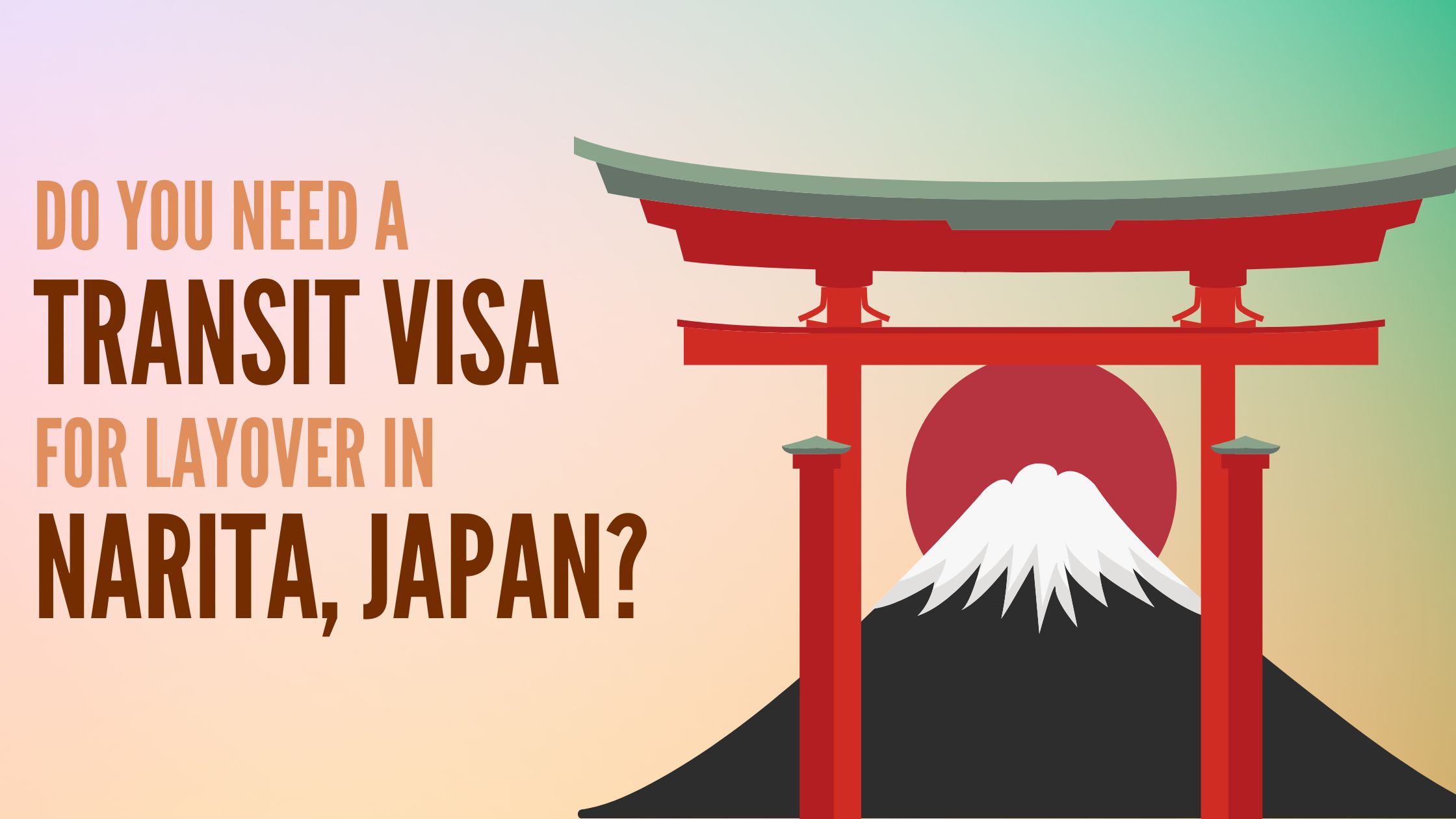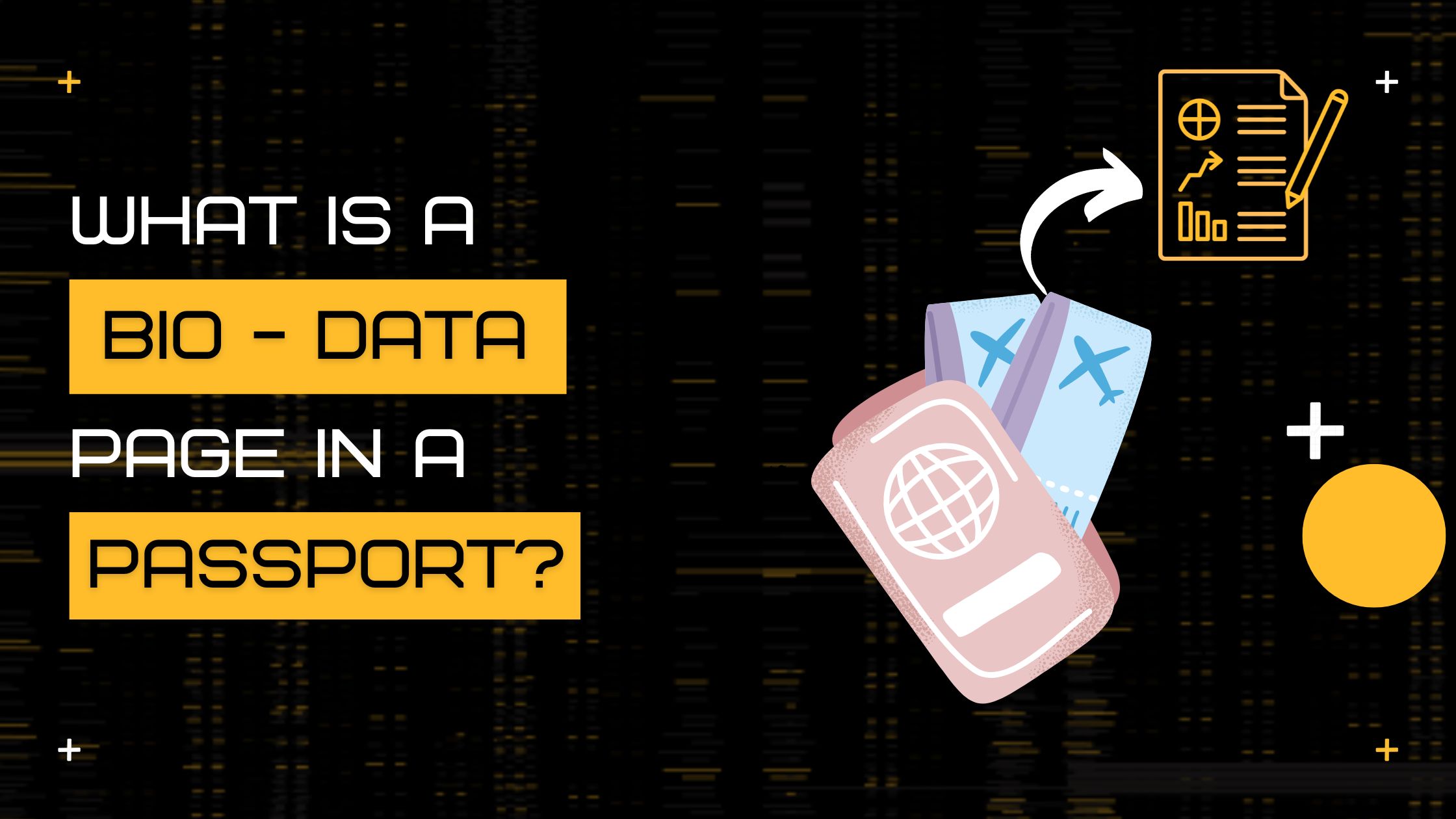Do you need a transit visa for a layover in Narita, Japan?” While layovers can be an excellent opportunity to explore a new city, they can also be stressful if you’re unsure about visa requirements.
In this article, we’ll provide you with all the information you need to determine whether or not you need a transit visa for your layover in Narita, Japan.
Do You Need A Transit Visa For Layover In Narita, Japan?
If you’re planning a layover in Narita, Japan, then it’s important to know if a transit visa is required. Generally speaking, transit visas are needed only if you’ll be spending more than 24 hours in the country before heading to your final destination.
To qualify for a transit visa, all activities while you’re in Japan must be limited to rest and leisure.
Business-related activities and visiting family or friends are not allowed on a transit visa.
Upon arrival at Narita airport, the immigration officer will decide whether or not you need a special re-entry permit.

Photo by Agê Barros on Unsplash
If the period of stay exceeds 24 hours but does not exceed 72 hours, travelers may obtain an ATV.
However, be aware that some countries require you to obtain a regular visitor visa in advance. Please check with your embassy or consulate before traveling.
Remember, if you’re planning a short stopover in Narita, Japan, opt for a transit visa with a short plan. It’s important to check if a transit visa is required for your stay.
Also, you must check what types of activities are allowed on transit visas.
Here’s a table showing which countries’ citizens require a transit visa in Narita, Japan, and which are exempt from this requirement:
| Country | Transit Visa Required? |
| Afghanistan | Yes |
| Albania | Yes |
| Bangladesh | Yes |
| Belarus | Yes |
| Canada | No |
| South Korea | No |
| United States | No |
| Cambodia | Yes |
| Cape Verde | Yes |
| Central African Republic | Yes |
| China | No |
| Cuba | Yes |
| Dominican Republic | Yes |
| Australia | No |
| New Zealand | No |
| Egypt | Yes |
| Equatorial Guinea | Yes |
| United Kingdom | No |
| Georgia | Yes |
| Argentina | No |
| Austria | No |
| Ghana | Yes |
| Bahamas | No |
| Guinea | Yes |
| Guinea-Bissau | Yes |
| Haiti | Yes |
| India | Yes |
| Barbados | No |
| Belgium | No |
| Bulgaria | No |
| Chile | YNo |
| Costa Rica | No |
| Croatia | No |
| Cyprus | No |
| Indonesia | Yes |
| Iran | Yes |
| Iraq | Yes |
| Korea (North) | Yes |
| France | No |
| Germany | No |
| Greece | No |
| Hong Kong | No |
| Hungary | No |
| Iceland | No |
| Ireland | No |
| Israel | No |
| Italy | No |
| Jamaica | No |
| Laos | Yes |
| Madagascar | Yes |
| Malaysia | No |
| Malta | No |
| Mauritius | No |
| Mexico | No |
| Monaco | No |
| Netherlands | Yes |
| Norway | No |
| Mongolia | Yes |
| Morocco | Yes |
| Mozambique | Yes |
| Singapore | No |
| Spain | No |
| Myanmar | Yes |
| Nepal | Yes |
| Oman | Yes |
| Switzerland | No |
| Taiwan | No |
| Trinidad and Tobago | No |
| Turkey | No |
| United Arab Emirates | No |
| Uruguay | No |
| Vatican City | No |
| Pakistan | Yes |
| Palestine | Yes |
| Philippines | Yes |
| Qatar | Yes |
| Russia | Yes |
| Saudi Arabia | Yes |
| Somalia | Yes |
| South Africa | Yes |
| Thailand | Yes |
| Turkey | Yes |
| Ukraine | Yes |
| United Arab Emirates | Yes |
| Venezuela | Yes |
| Vietnam | Yes |
| Yemen | Yes |
| Zambia | Yes |
| Zimbabwe | Yes |
How Much Is The Japan Transit Visa Fees?
The fee for obtaining a Japan transit visa is 700 yen. This fee applies to both single-entry and multiple-entry visas. Additionally, 3,000 yen must be paid for a single-entry visa and 6,000 yen for a double-entry or multiple-entry visa.
It’s important to note that these fees are subject to change at any time and may vary from one country or region to another.
Therefore, it’s best to check with the corresponding consulate or embassy before applying for your visa.
Can You Apply For Japan Transit Visa Online?
Yes, you can apply for a Japan Transit visa online. Citizens of eligible countries have the opportunity to apply for their Japan eVisa and Passenger Locator Form via an online form. Once the application is completed successfully, travelers can stay in Japan for up to 30 days per single entry.
However, please note that this type of visa only allows its holder to transit through Japan and not stay in the country as a tourist.
If you are looking to extend your stay with the purpose of tourism, you should consider applying for the regular eVisa instead.
Please make sure you read all the information regarding eligibility and requirements before submitting your application.
For more information about how to request a Japanese eVisa, please refer to the official website of the Japanese Ministry of Foreign Affairs.
You can also contact your local embassy or consulate for additional visa-related inquiries.
Do US Citizens Need Transit Visa For Japan?
For US citizens looking to visit Japan, there are certain travel requirements that must be met. Currently, US citizens do not need visas for short-term visits (up to three months). However, if you plan to stay in Japan beyond the allotted timeframe, you may need a transit visa.
Transit visas are typically valid for 15 days from the date of issuance and can only be used by passengers who have a confirmed onward ticket to another destination outside of Japan.
You must also not engage in any activities that would require an extended visa during your transit time.
Additionally, those who have been fully vaccinated with vaccines approved by the Japanese government and are arriving after October 11, 2022, will not require a pre-travel COVID-19 test.
If you’re unsure about whether or not a transit visa is required for your stay in Japan, it’s best to contact the nearest Japanese embassy or consulate for more information.
They will be able to provide specific guidance on the travel requirements that must be met in order to travel to Japan.
It’s also important to note that all international travelers are subject to current health measures and other restrictions that may be imposed by the Japanese government due to COVID-19.
What Happens If You Travel Without A Transit Visa?

If you are traveling with a layover and need to collect your baggage before continuing on to your destination, then you may find yourself in a situation where transit VISA requirements apply. Without the proper authorization, you could be denied entry into the country and may even face legal consequences.
It is essential that travelers understand their visa requirements before they leave home. Doing so helps ensure smooth passage through customs and immigration.
If a traveler attempts to travel without obtaining the necessary visas or paperwork, they risk being detained by authorities upon arrival at their destination airport. They might also get deported back to their point of origin depending on the severity of the offense.
In some cases, travelers have been able to get away with simply not having obtained a transit visa in the past.
However, it is highly recommended that travelers try their best to obtain the necessary visas and documents before embarking on their journey.
Failing to do so could lead to a variety of unpleasant outcomes, such as being stuck in a foreign country for an extended period of time, facing hefty fines, or even serving jail time.
How Do You Apply For A Transit Visa For Narita, Japan?
Applicants must submit online an application form and upload documents such as proof of travel arrangements, valid passports, etc. Additional documentation may be required depending on individual circumstances. After the forms have been reviewed and accepted by the Immigration Bureau of Japan, a transit visa will be issued.
Let us now have a look at the detailed process of applying for a transit visa for Narita, Japan below:
- Contact the Embassy or Consulate of Japan in your home country to book an appointment. Some countries may require that you apply through an accredited travel agency instead.
- Gather all the required documents for a Japan Transit Visa.
- Submit the documents at the Embassy/Consulate. After that, the travel agency is responsible for processing visa applications and waiting for them to be processed. This usually takes 5 working days from the date when the Japanese Representative Office receives your completed application.
- Collect your Japan Transit Visa and you’re ready to go!
Documents required for a Japan Transit Visa include:
- A valid passport with at least one blank visa page
- Two identical passport photographs were taken within the past 6 months
- Flight tickets or an itinerary showing travel in and out of Japan within 15 days of entry
- Proof of sufficient funds (e.g. bank statements, credit card statements)
- Completed and signed the application form
- Any other supporting documents as requested by Japanese authorities, such as hotel reservations or letters of invitation from family/friends.
Do You Need Transit Visa For Layover In Tokyo?
There are a few factors that will determine your answer.
- Your nationality
- The length of your layover
- The final destination. Additionally, or those who come from short-term stay visa requirements in Japan, you won’t likely need a transit visa for your layover.
However, if you come from one of the countries which require a short-term stay visa for Japan, then it is likely that you will also need to obtain a transit visa for your layover.
The best way to ensure whether or not you will need a transit visa for your Tokyo layover is to check with the Japanese embassy or consulate in your country.
They will be able to provide you with the most accurate and up-to-date information regarding your specific situation.
It is important to ensure that you have obtained all of the necessary visas required for your travel before departing on your trip, whether it is a layover in Tokyo or a longer stay in Japan.
Transfer From Narita To Haneda: Everything You Need To Know

Traveling between Narita Airport and Haneda Airport can be daunting. The best option available is to take a Limousine Bus – these buses run direct. You can book them online in English. Taxi rides are preferable for a large group, but they will cost more than the bus.
If you’re looking to save money, train travel is the cheapest – just keep in mind that this will involve making connections and lugging your luggage around.
Whatever transfer method you choose, make sure you plan ahead and have all the information you need before starting your journey from Narita to Haneda.
That way you can enjoy a stress-free and comfortable journey!
Let us now explore the above-mentioned options in detail:
Limousine Bus
Transferring from Narita to Haneda is easy and stress-free when you take the Limousine Bus. Offering 27 departures daily, services start at 7 am and finish at 9:35 pm with no transfer required.
Enjoy undercarriage luggage storage, comfy seats, free WiFi and have a nap! You’ll arrive at Haneda Airport in comfort and convenience with great value for money. Book your tickets today!
For more information on schedules, visit their website or contact them for assistance.
Train
Traveling between Narita and Haneda airport is possible by train but is not the most practical option. If you’re a light packer, you may be able to make some savings, however, this journey involves transfers which can slow down time.
Plan ahead and research your route carefully as there’s no one fastest way. Ensure that the timetables align or if they don’t, adjust accordingly.
Note that train options are generally not particularly fast so factor in extra time when making your plans.
Depending on where your accommodation is located, it’s also worth considering other methods such as bus or taxi – although these come with a higher cost tag.
Taxis
Taxis are a popular way to transfer from Narita to Haneda. They are the most expensive option but also the quickest and most convenient, especially for groups and families. Taxis operate 24/7 so you don’t need to worry about timing if you’re arriving late or early.
Be aware of nighttime surcharges and road tolls, which may drive up the price of your journey. Lastly, transfers aren’t necessary when taking a taxi, making it an even more attractive option.
If you opt for a taxi transfer from Narita to Haneda, make sure you plan ahead!
FAQs
Do You Need A Visa To Transfer From Narita To Haneda?
If you are transferring from Narita Airport to Haneda Airport and are not a citizen of Japan, then you may need to apply for a visa in advance. Different nationalities have different requirements and restrictions when it comes to visa applications.
Therefore, be sure to check our guide to arriving in Japan before your journey.
Keep in mind that if you do require a visa, the process can take several weeks or even months – so plan ahead!
You will also need to pass through Immigration during your transfer, so make sure all necessary paperwork is filled out correctly before leaving Narita.
How Long Do You Need To Transfer From Narita To Haneda?
When transferring from Narita Airport to Haneda Airport, the airlines recommend allowing a minimum of 3 hours of travel time. This is due to the process of disembarking from the plane, going through baggage claim and Immigration, which can take an hour or more.
In consideration of these factors, allow yourself at least 4 hours between flights. Keep in mind that this is a long journey, so give yourself ample time for rest breaks so you don’t feel overwhelmed by your connecting flight.
Can You Use Your Jr Pass To Transfer Between Narita And Haneda?
It is not worth it to try and use your JR Pass for this short journey as the pass is designed for long-distance travel on the Shinkansen. Alternatively, you can take a taxi or limousine bus to transfer between Narita and Haneda airports.
Although more expensive than public transportation, they offer door-to-door service which may be convenient if traveling with lots of luggage.
Can You Get Transit Visa On Arrival In Japan?
If you are planning a stopover in Japan, it is possible to obtain a transit visa on arrival. This visa, called the Japan Shore Pass, enables passengers to stay in the country for up to 72 hours without needing any additional visas.
The airline will process the application upon your arrival. However, it is recommended that travellers contact their airline before boarding their flight to ensure a smoother process and avoid any hassle.
Once you have obtained this transit visa, you may travel within Japan freely during the time period specified by your visa.
Please note that if you intend to stay longer than three days or leave the airport during your stopover, then you will need an appropriate Japanese entry permit issued by an embassy or consulate prior to departure.
Conclusion
In conclusion, whether you need a transit visa for a layover in Narita, Japan depends on various factors such as your nationality, travel purpose, and length of stay. It is essential to check the latest visa regulations and requirements before planning your trip to avoid any last-minute surprises or inconveniences.
If you need a transit visa, you should apply well in advance and ensure that you have all the required documents and fees to avoid any delays or rejections.
However, if you qualify for any visa exemptions, you can save time and money while transiting through Narita, Japan. Remember to plan your transit itinerary carefully, and follow the rules and guidelines for a smooth and hassle-free journey.







